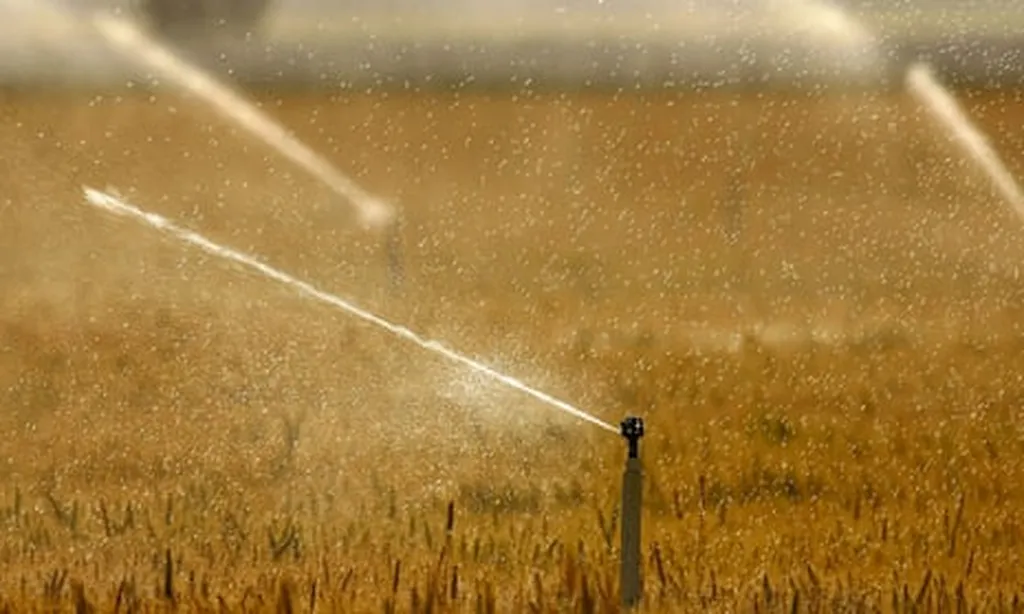In the heart of India’s agricultural research hub, a groundbreaking study is reshaping how we monitor and manage crop growth. Dr. Devanakonda Venkata Sai Chakradhar Reddy, from the Division of Agricultural Physics at the Indian Council of Agricultural Research (ICAR), Indian Agricultural Research Institute (IARI) in New Delhi, has demonstrated the power of drone technology in precision agriculture. His research, published in the Biology and Life Sciences Forum (a journal known in English as ‘Журнал биологии и наук о жизни’), is paving the way for more efficient, data-driven farming practices that could have significant commercial impacts, including for the energy sector.
Reddy’s study focused on three wheat varieties—DBW-187, HD-3086, and PBW-826—under eight different nitrogen treatments. Using drone-based multispectral imaging, he tracked the Normalized Difference Vegetation Index (NDVI), leaf area index (LAI), and leaf nitrogen content (LNC) at two critical growth stages: flowering (90 days after sowing) and grain filling (108 days after sowing). The results were striking. “We observed strong correlations between NDVI, LAI, and LNC, with the predictive power of these relationships improving significantly from the flowering to the grain-filling stage,” Reddy explains. The R² values, a measure of how well the data fit the model, climbed from 0.78–0.86 at flowering to an impressive 0.88–0.90 at grain filling.
So, what does this mean for the future of agriculture and beyond? Precision agriculture is not just about optimizing crop yields; it’s about resource efficiency. By using drones to monitor crop health and nutrient status in real-time, farmers can apply fertilizers and water more precisely, reducing waste and environmental impact. This efficiency could translate into cost savings and improved sustainability for the agricultural sector, which in turn benefits industries that rely on agricultural products, including the energy sector.
The energy sector, particularly bioenergy, stands to gain from these advancements. Crops like wheat are not just food; they are potential feedstocks for biofuels. Efficient monitoring and management of these crops can ensure a steady, high-quality supply of biomass for energy production. “The ability to predict yield and nutrient status early in the growing season can help energy companies plan their supply chains more effectively,” Reddy notes. This could lead to more stable energy prices and reduced reliance on fossil fuels.
The implications of Reddy’s research extend beyond the fields. As the world grapples with climate change and resource scarcity, technologies that enable smarter, more sustainable agriculture are invaluable. Drones equipped with multispectral sensors offer a scalable, cost-effective solution for monitoring large areas of farmland. This could be a game-changer for developing countries, where access to advanced agricultural technologies has historically been limited.
Looking ahead, Reddy’s work highlights the potential for integrating drone technology with other precision agriculture tools, such as satellite imagery and machine learning algorithms. This integration could provide even more detailed insights into crop health and growth patterns, further optimizing resource use and yield prediction. “The future of agriculture lies in the fusion of these technologies,” Reddy says. “By leveraging the strengths of each, we can create a more resilient and productive agricultural system.”
As the world continues to innovate, Reddy’s research serves as a reminder of the transformative power of technology in agriculture. From the fields of New Delhi to the energy sectors worldwide, the ripple effects of this study are just beginning to be felt. The journey towards sustainable, data-driven farming has taken a significant step forward, and the future looks promising.

